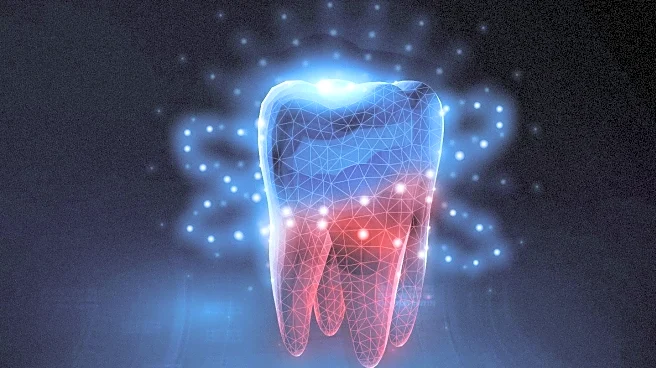What's Happening?
A recent retrospective cohort study has evaluated the orthodontic outcomes of interproximal reduction (IPR) versus mandibular incisor extraction (MIE) in patients with mandibular crowding. Conducted at a tertiary
care hospital, the study used the American Board of Orthodontics – Objective Grading System (ABO-OGS) to assess post-treatment stability and root resorption. The study included 40 patients, divided equally between the two treatment groups. Results indicated that one year post-treatment, the IPR group had a higher median ABO-OGS score compared to the MIE group, suggesting better long-term stability. However, MIE showed superior initial alignment but was associated with greater root resorption.
Why It's Important?
The findings of this study are significant for orthodontic treatment planning, highlighting the trade-offs between initial alignment and long-term stability. The results suggest that while MIE may offer immediate alignment benefits, IPR could be more beneficial for long-term outcomes and minimizing root resorption. This information is crucial for orthodontists in making informed decisions tailored to individual patient needs, potentially impacting patient satisfaction and treatment success rates.
What's Next?
Orthodontists may consider these findings when developing treatment plans, potentially opting for IPR in cases where long-term stability is prioritized. Further research could explore additional factors influencing treatment outcomes, such as patient-specific anatomical considerations or the impact of different orthodontic appliances.













